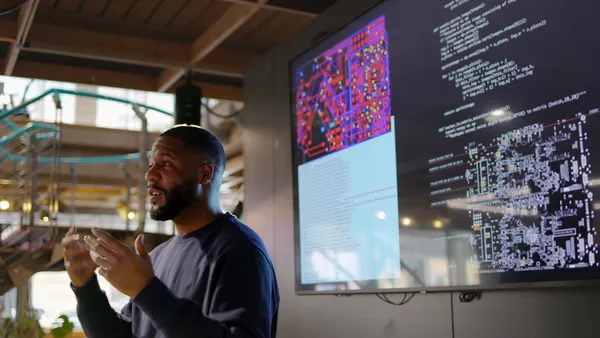Elisa Villanueva Beard is CEO of Teach For America.
You don’t have to look hard to find conflicting, often heated, opinions about what kids in America need to learn — and what they don’t.
When they are thoughtful, informed and center students, these can be important debates in an education system as complex and a country as diverse as ours. But they shouldn’t distract us when so many students are struggling to make up for learning time lost during the pandemic.
As the CEO of an organization that trains and supports extraordinary leaders to teach in rural and urban America and become lifelong advocates and change makers for educational excellence and equity, I urge us to cut through the noise.

We know what we need to do right now to set kids up for success: Ensure they can read proficiently in 3rd grade and master certain math principles by 4th and 8th grades. Research has found that reaching these academic milestones increases students’ likelihood of being prepared for college and career and puts them on track to having a choice-filled life.
Yet too many children are missing them. And though many students have rebounded considerably from the pandemic’s effects, gaps in math and reading between rich and poor, Black and White, and Hispanic and White students are wider than in 2019. These setbacks don’t just impact reading and math learning, they set students back in all their schooling and entrench inequity across subjects.
The stakes are high. If we don’t double down on the basics, this generation of kids won’t be prepared to have agency and freedom in their lives, fuel our economy, make their greatest contributions to their communities and our country, or strengthen our democracy.
Milestones matter more than you think
Kids need to read on time because literacy is the foundation of all learning. Not reading at grade level by 3rd grade’s end — as was the case for about a third of students in 2022, and many more in some parts of the country — disadvantages students for years.
Researchers found that students not reading proficiently in 3rd grade were four times as likely as their proficient peers not to graduate high school — six times if they’d lived in a high-poverty neighborhood for at least a year.
Like reading, math unlocks learning. Researchers consider 8th grade math the “gatekeeper” to higher math and science courses and other postsecondary opportunities. Eighth grade math proficiency also predicts success in high school math exams and beyond — but many students aren’t being prepared for or getting access to challenging middle-school math courses.
Some adults may argue that they rarely use what they learned in high school math, therefore not all students need to study advanced math. But we need more students prepared for and interested in STEM careers, not fewer.
Implementing what we know works
My Teach For America colleagues and I believe so strongly in the importance of reading and math milestones that we’ve made them metrics for our organization’s 2030 goals. Here are some ways states and school districts can lean into helping kids meet these milestones:
-
Use the science of reading and the science of math. “Science of reading” approaches based on decades-worth of evidence have gained steam over the past decade. Thirty-seven states and the District of Columbia have laws or policies as of January aligning instruction with the science of reading. More states should follow suit, and existing policies can be strengthened.
For math, we have a smaller body of knowledge, and we need increased funding for high-quality research. Still, we already know a lot, and at least seven states have passed new laws aimed at improving math education.
For both subjects, states should mandate high-quality, evidence-based curricula. -
Offer high-dosage tutoring in both subjects. The past few years of post-pandemic recovery have brought exciting new research about how to put in place effective tutoring to help students catch up or recover lost learning.
Teach For America’s Ignite program is an example of how online tutoring by college students can bolster learning and provide support for teachers. Ignite is rooted in creating social connection and a sense of belonging for students, which advancements in neuroscience show are critical conditions for children's learning process.
Increasingly, there is also evidence that tutoring helps reduce absenteeism, another factor in kids’ learning. -
Train teachers in line with the science and provide relevant and high-quality professional development. All of us who prepare and support educators must continually modernize and update our programs to keep pace with the evidence.
Throughout their careers, teachers deserve high-quality training and development so that they can use instructional practices that are aligned to the science of reading and math. Math teachers would also ideally be supported by a regional or school-based math coach who can observe instruction and provide feedback in evidence-based practices for math instruction.
Both math and language teachers need to be well-prepared to teach a variety of students, including culturally and linguistically diverse learners and students with learning disabilities. -
Embrace the idea that all kids can learn these subjects. Contrary to popular opinion, every kid can be a reader. Every kid can be good at math. Math anxiety is real, though. Teachers may need help coping with it — for themselves and their students.
Of course, kids can’t master reading and math if they don’t have adequate supports inside and outside the classroom. Across the country, the pandemic’s ripple effects — including spikes in chronic absenteeism, mental health issues, and teacher and staff shortages — have endured.
Getting kids on the right track in math and reading must also involve addressing those issues — and agreeing, once and for all, that strong reading and math skills are two things every kid needs, deserves and can attain.












